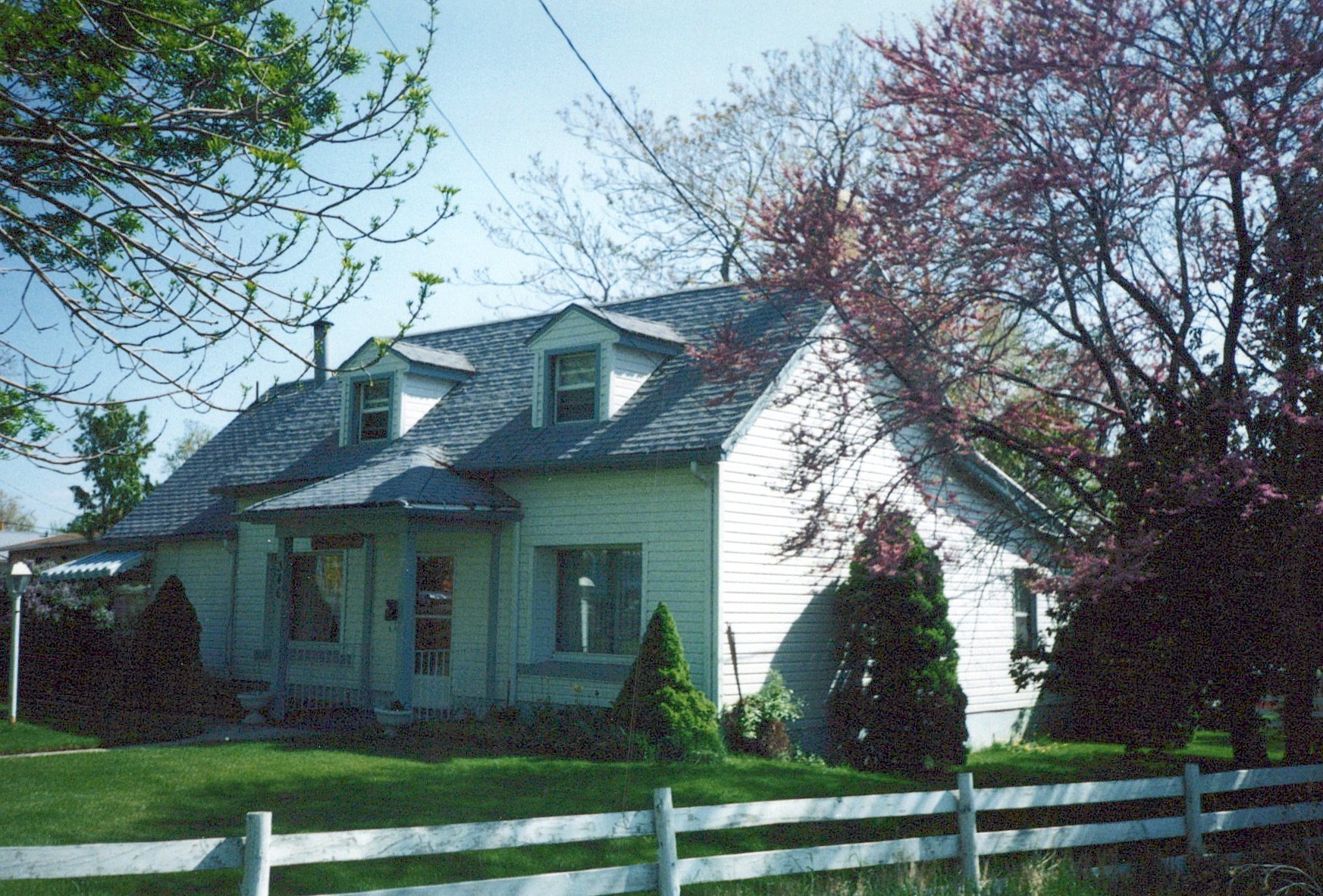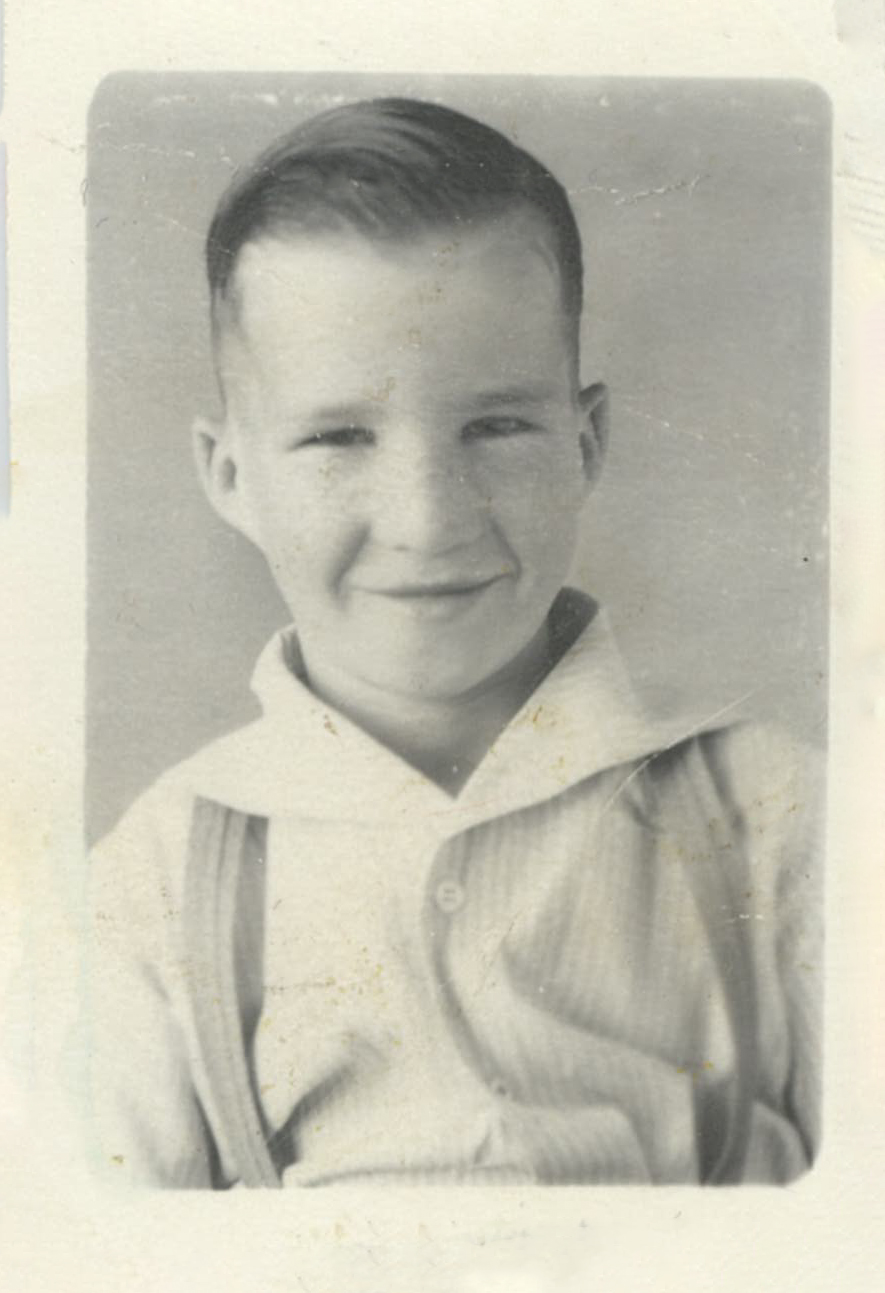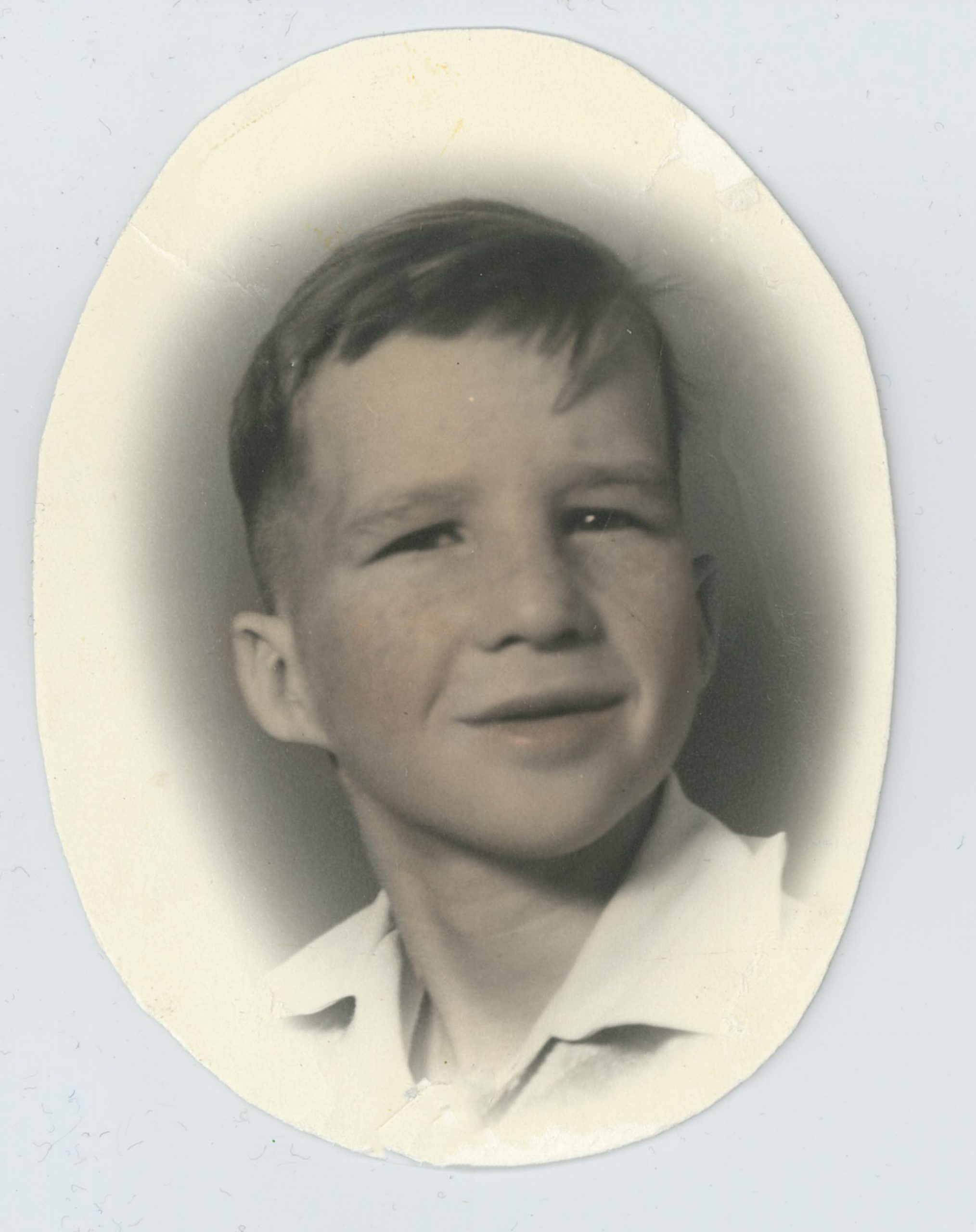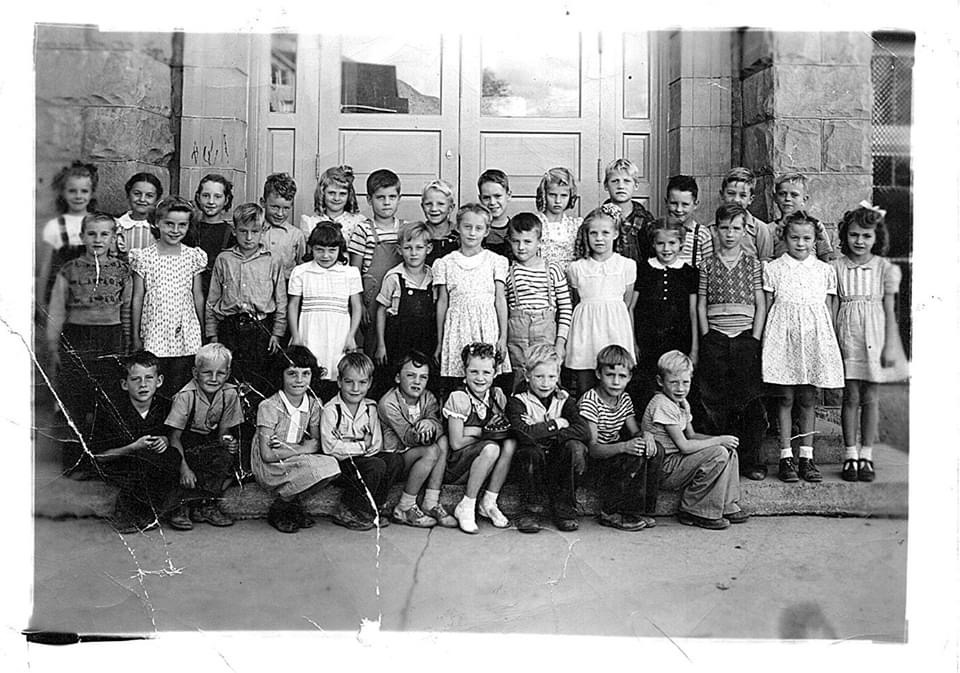One of the first things I remember when I was quite young, around age four, my sister and I contracted scarlet fever. We were quarantined, and we couldn’t leave our home. While we were quarantined, my father, who was a dairy farmer, had one of his Jersey bulls get loose—it had gone up our driveway and down State Street in town to the Wasatch Cafe where there was a bus loading people. This bull started driving people away.
It went after the bus driver, but my father was able to go down and bring it home. I only heard about it because my sister and I were at home under quarantine because of Scarlet fever.
My father had a bull calf. If you’re a dairy farmer, the bull calf doesn’t do any good for your herd because you’re raising females who could give milk. When I was 5 my Dad traded a bull calf to my uncle for a young colt. It was my first horse and his name was Blue (He was dark grayish blue but later on he turned white). I rode that horse for about ten years.
After that my brother went to stay for a week with Uncle Pat and Aunt June in Cedar Fort, Utah. Uncle Pat had a herd of wild horses from which he picked one that was the same color as Kent’s hair and told him it was his to bring home.
About that time, I started kindergarten. We met in the basement of a large tabernacle, which was a church building. Each of us had to bring a blanket. When we had our nap during the day, we could lay down on the blanket. When they gave us something to eat, we could sit on the blankets.
The teacher would recognize everyone when they had a birthday. They taught us mostly those things that helped with our demeanor. We all got along well. The teacher always read to us, which was important. That’s basically what we did in kindergarten. It was kind of a period where we adjusted to going to school.
When I was growing up in Pleasant Grove, Utah my hometown was probably about 9000 people. Mostly, it was a farming community. We only had one grade school that we all went to, Central Elementary (it was a 3-story building then). We would walk the .8 miles to school and back home every day.
Most of my friends growing up went to the same Pleasant Grove 1st Ward and school that I did. Some of my closest friends were Stewart Beveridge, Jerry Olpin, Karl Richins, Lawrance Kockerhans, Toby Bath, Alton Hone, Eugene Keniston, and Eldon Armitstead.
I remember one time when we were in our teenage years, there were five or six of us boys riding on Blue at once. We rode to Lindon to visit some girls. Blue didn’t seem to mind that there were so many kids on at once and we made it there and back without any problems.
We didn’t really have a curfew growing up, but whatever time we came home, we knew we still had to get up and milk at 5:00 am. So it was beneficial to us to get home at a decent time.
Somewhere around that same time, I went over to one of my neighbors whose family were also dairy farmers, and went on top of the barn. They had a metal roof, and we slid down this metal roof. When we got to the end, I ran a large wood sliver in my arm. They had to take me to the doctor and get that taken out. I still have a scar today from it.
Our church, The Church of Jesus Christ of Latter Day Saints, does genealogy work where we track down all of our ancestors and take their names to the temple. The young men and young women are baptized for men and women who have passed on. At the age of 12, I remember that a group of us young men and young women went to Salt Lake City, which was about 40 miles away. We did about 100 names each time we went. My grand kids are all still doing that today.
My mother did all of the shopping, Dad very seldom ever went shopping. I remember when I was high school my Mother would take me over to Provo where all of the clothing stores were to shop for clothes and things. And most the time we went to Pennys in Provo, and she would help me pick out shirts and pants. In addition to Levi’s, back in those days they had another kind of pant called Moleskin. And they also had shoes like that. We did most of our shopping in Provo at Pennys.
I was excited to play baseball when I was a teenager but Dad told me that that wasn’t going to work because I had to be there and help milk cows all the times that he couldn’t do the milking and do all the chores so I never did play. That’s why later on I got involved in softball for quite a few years. Kayle Bullock was our coach in church fast pitch softball and told me I should be the pitcher. I played on teams where the players were ages 14-17.
I had to drive the dairy herd to the pasture which was about a mile away every morning at 7:00am and then would bring them home at 4:30 in the evening. I would go at those times so that I would miss the traffic going to Geneva Steel. I rode our horse to do that. He was easy going.






